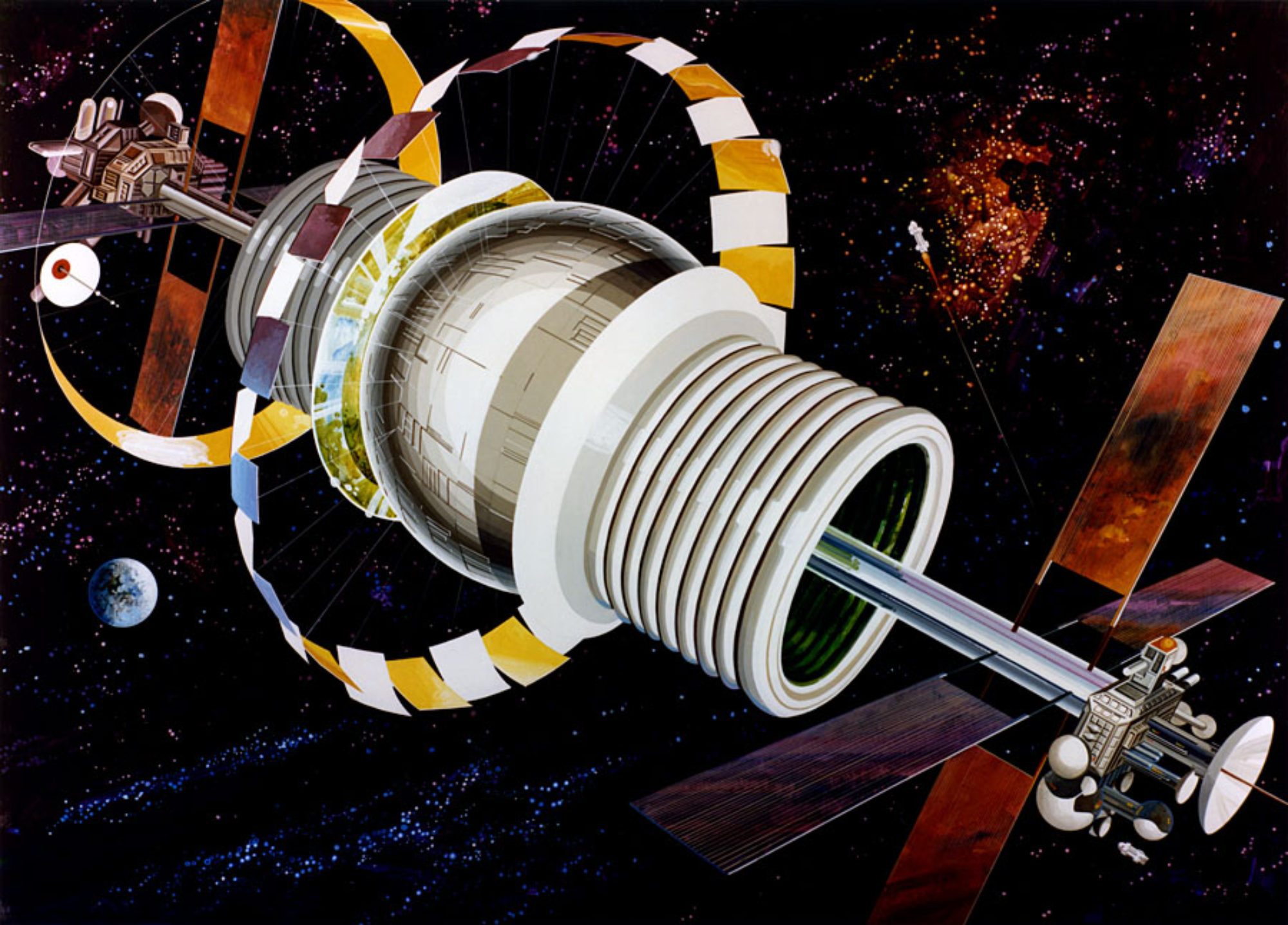
The Planetary Sunshade Foundation (PSF) would answer “Yes!” to both questions. In a paper presented at the AIAA ASCEND conference in 2020 on the group’s website, the authors* lay out a well researched case on feasibility. The technology needed to build such a megastructure, envisioned to be located at the Earth-Sun L1 Lagrange point, will depend heavily on resource extraction on the Moon and Near Earth Asteroids as well as in-space manufacturing, both of which are anticipated to be mature industries by mid-century.
Building such a megastructure will be a huge undertaking and would require significant funding as well as international cooperation among world governments. PSF and many other groups (including President Joe Biden) take the position that global warming is an existential threat and therefore mitigating its effects are worth the costs. The foundation says on their website that “We have only ten years to dramatically decrease the use of fossil fuels, or be forced to respond to catastrophic global warming.” Other credentialed climate scientists interpret the same data differently disagreeing that if we don’t act now the impact will be catastrophic. They believe that a more gradual transition based on innovation and adaption would make more economic sense.
Dr. Steven Koonin, who served as Undersecretary for Science in the U.S. Department of Energy under President Obama, in his book “Unsettled” uses data from the UN Intergovernmental Panel on Climate Change to show that the impact on the U.S. economy near the end of this century due to the worst scenario of predicted global temperature rise would be minimal. Therefore, in his view the warnings of an “existential threat” are not supported by the data.
Bjorn Lomborg takes the position that rather than making an abrupt change to our economy of reducing carbon emissions to zero by mid century, which is projected to impose significant economic costs and lower standards of living, we need to ramp up our investments in green energy innovation. This would include research and development in renewable energy technology such as solar and wind power, improving battery efficiency, nuclear power and other options to more gradually migrate away from fossil fuels.
The idea of placing a sunshade at L1 to cool the planet is not new, as evidenced by a few examples listed as references in the PSF paper. One of the references published back in 2006 by Roger Angel, Professor of Astronomy and Optical Sciences at the University of Arizona, examines the “Feasibility of cooling the Earth with a cloud of small spacecraft near the inner Lagrange point (L1)”. Angel realized that embarking on such an ambitious endeavor should only be initiated to avert serious climate change “…found to be imminent or in progress.” He concludes that “The same massive level of technology innovation and financial investment needed for the sunshade could, if also applied to renewable energy, surely yield better and permanent solutions.”
Such major undertakings among world governments are by nature political, but if agreement is eventually reached by stakeholders on the urgency to build a planetary sunshade, the option will be available to humanity in the near future should it become necessary. The planetary sunshade is technically possible with future technology advances and has the potential for other benefits. For example, if the structure is made from thin-film photovoltaics, it would be possible to collect enough solar energy to provide hundreds of terawatts of power which is many times the current needs of Earth (currently 17TW). PSF believes the sunshade megastructure “…could generate civilization-transforming energy supplies.” The authors even suggest that a toroidal colony like the one conceived in the NASA 1975 Space Settlement Design Study could be constructed nearby to house workers supporting the manufacture of the sunshade and be “…combined to create banded toroidal settlements as well, scaling linearly, depending upon the population needs of the settlement.”
___________________
* The authors ( A. Jehle, E. Scott, and R. Centers) of the paper “A Planetary Sunshade Built from Space Resources” as of last year were graduate students in the Center for Space Resources at the Colorado School of Mines in Golden, Colorado. Centers and Scott are Director and Systems Engineer, respectively on the PSF Team.
